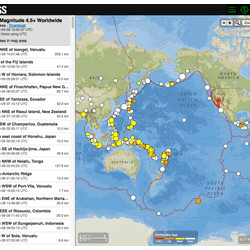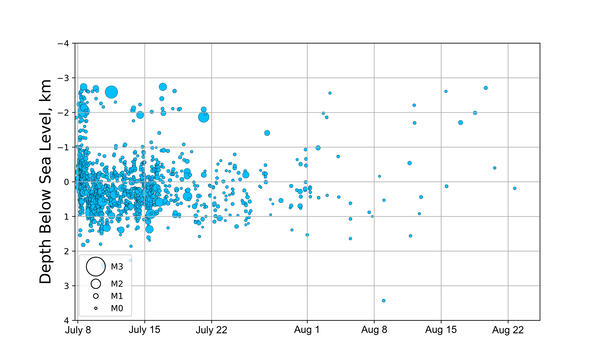Depths of located earthquakes during July 8 - August 25, 2025, seismic swarm at Mount Rainier, WA
Depths of located earthquakes during July 8 - August 25, 2025, seismic swarm at Mount Rainier, WADepth of earthquakes during the July 8 - August 25, 2025, seismic swarm at Mount Rainier, WA.
















